| Listing 1 - 10 of 19 | << page >> |
Sort by
|
Book
Year: 2002 Publisher: [S.l.]: [chez l'auteur],
Abstract | Keywords | Export | Availability | Bookmark
 Loading...
Loading...Choose an application
- Reference Manager
- EndNote
- RefWorks (Direct export to RefWorks)
Algèbre universelle --- Algebra, Universal. --- Logique floue --- Logique multivalente

ISBN: 1584882549 Year: 2002 Publisher: Boca Raton (Fla.) : Chapman and Hall/CRC,
Abstract | Keywords | Export | Availability | Bookmark
 Loading...
Loading...Choose an application
- Reference Manager
- EndNote
- RefWorks (Direct export to RefWorks)
This graduate-level textbook provides an introduction to the basic ideas and concepts of universal algebra and surveys of newer developments. Universal Algebra and Applications in Theoretical Computer Science is written in a style accessible to beginners, with every new concept clearly explained and numerous examples provided. The main ideas of concept lattices as an important tool for conceptual analysis of data are developed, and several examples are given. The algebraic theory of tree automata and its interconnections to universal-algebraic concepts are described. The final part of the book is devoted to key applications of universal algebra in theoretical computer science.
Algebra --- Computer science --- Algebra, Universal. --- Mathematics. --- Algebra, Universal --- Algèbre universelle --- Informatique --- Mathematics --- Mathématiques --- Algèbre universelle. --- Mathématiques. --- Algèbre universelle. --- Mathématiques.
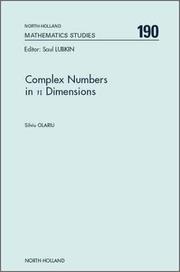
ISBN: 1281054798 9786611054793 0080529585 0444511237 9780444511232 9780080529585 Year: 2002 Publisher: Amsterdam ; Boston : Elsevier,
Abstract | Keywords | Export | Availability | Bookmark
 Loading...
Loading...Choose an application
- Reference Manager
- EndNote
- RefWorks (Direct export to RefWorks)
Two distinct systems of hypercomplex numbers in n dimensions are introduced in this book, for which the multiplication is associative and commutative, and which are rich enough in properties such that exponential and trigonometric forms exist and the concepts of analytic n-complex function, contour integration and residue can be defined. The first type of hypercomplex numbers, called polar hypercomplex numbers, is characterized by the presence in an even number of dimensions greater or equal to 4 of two polar axes, and by the presence in an odd number of dimensions of one polar axis.
Numbers, Complex. --- Complex numbers --- Imaginary quantities --- Quantities, Imaginary --- Algebra, Universal --- Quaternions --- Vector analysis
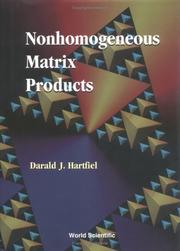
ISBN: 1281951595 9786611951597 9812810056 9789812810052 9781281951595 9789810246280 9810246285 6611951598 Year: 2002 Publisher: River Edge, N.J. World Scientific
Abstract | Keywords | Export | Availability | Bookmark
 Loading...
Loading...Choose an application
- Reference Manager
- EndNote
- RefWorks (Direct export to RefWorks)
Infinite products of matrices are used in nonhomogeneous Markov chains, Markov set-chains, demographics, probabilistic automata, production and manpower systems, tomography, and fractals. More recent results have been obtained in computer design of curves and surfaces. This book puts together much of the basic work on infinite products of matrices, providing a primary source for such work. This will eliminate the rediscovery of known results in the area, and thus save considerable time for researchers who work with infinite products of matrices. In addition, two chapters are included to show how infinite products of matrices are used in graphics and in systems work.
Matrices. --- Algebra, Matrix --- Cracovians (Mathematics) --- Matrix algebra --- Matrixes (Algebra) --- Algebra, Abstract --- Algebra, Universal
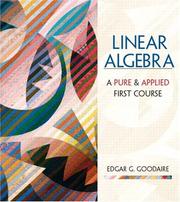
ISBN: 0130470171 9780130470171 Year: 2002 Publisher: Upper Saddle River (N.J.) : Pearson education,
Abstract | Keywords | Export | Availability | Bookmark
 Loading...
Loading...Choose an application
- Reference Manager
- EndNote
- RefWorks (Direct export to RefWorks)
Algebras, Linear. --- Linear algebra --- Algebras, Linear --- Algebra, Universal --- Generalized spaces --- Mathematical analysis --- Calculus of operations --- Line geometry --- Topology
Dissertation
Year: 2002 Publisher: [S.l.]: [chez l'auteur],
Abstract | Keywords | Export | Availability | Bookmark
 Loading...
Loading...Choose an application
- Reference Manager
- EndNote
- RefWorks (Direct export to RefWorks)

ISBN: 0521807883 0521022452 0511528469 9780521807883 0511826206 9780511528460 9780521022453 Year: 2002 Publisher: Cambridge: Cambridge university press,
Abstract | Keywords | Export | Availability | Bookmark
 Loading...
Loading...Choose an application
- Reference Manager
- EndNote
- RefWorks (Direct export to RefWorks)
This 2002 book presents the reader with mathematical tools taken from matrix calculus and zero-one matrices and demonstrates how these tools greatly facilitate the application of classical statistical procedures to econometric models. The matrix calculus results are derived from a few basic rules that are generalizations of the rules of ordinary calculus. These results are summarized in a useful table. Well-known zero-one matrices, together with some newer ones, are defined, their mathematical roles explained, and their useful properties presented. The basic building blocks of classical statistics, namely the score vector, the information matrix, and the Cramer-Rao lower bound, are obtained for a sequence of linear econometric models of increasing statistical complexity. From these are obtained interactive interpretations of maximum likelihood estimators, linking them with efficient econometric estimators. Classical test statistics are also derived and compared for hypotheses of interest.
Mathematical statistics --- Matrices --- Business, Economy and Management --- Economics --- Matrices. --- Mathematical statistics. --- Mathematics --- Statistical inference --- Statistics, Mathematical --- Statistics --- Probabilities --- Sampling (Statistics) --- Algebra, Matrix --- Cracovians (Mathematics) --- Matrix algebra --- Matrixes (Algebra) --- Algebra, Abstract --- Algebra, Universal --- Statistical methods
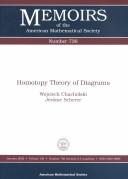
ISBN: 0821827596 Year: 2002 Publisher: Providence, R.I. American Mathematical Society
Abstract | Keywords | Export | Availability | Bookmark
 Loading...
Loading...Choose an application
- Reference Manager
- EndNote
- RefWorks (Direct export to RefWorks)
Algebraic topology --- Categories (Mathematics) --- Homotopy theory --- Deformations, Continuous --- Topology --- Category theory (Mathematics) --- Algebra, Homological --- Algebra, Universal --- Group theory --- Logic, Symbolic and mathematical --- Functor theory --- Homotopy theory. --- Catégories (mathématiques) --- Homotopie --- Homotopie.
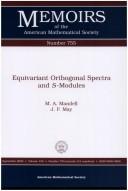
ISSN: 00659266 ISBN: 082182936X 9780821829363 Year: 2002 Volume: 755 Publisher: Providence (R.I.): American mathematical society,
Abstract | Keywords | Export | Availability | Bookmark
 Loading...
Loading...Choose an application
- Reference Manager
- EndNote
- RefWorks (Direct export to RefWorks)
Analytical topology --- Homotopy theory. --- Categories (Mathematics) --- Homotopie. --- Catégories (mathématiques) --- Homotopy theory --- Deformations, Continuous --- Topology --- Category theory (Mathematics) --- Algebra, Homological --- Algebra, Universal --- Group theory --- Logic, Symbolic and mathematical --- Functor theory
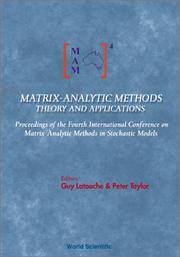
ISBN: 1281929530 9786611929534 9812777164 9789812777164 9812380515 9789812380517 9781281929532 6611929533 Year: 2002 Publisher: New Jersey World Scientific
Abstract | Keywords | Export | Availability | Bookmark
 Loading...
Loading...Choose an application
- Reference Manager
- EndNote
- RefWorks (Direct export to RefWorks)
Matrix-analytic methods are fundamental to the analysis of a family of Markov processes rich in structure and of wide applicability. They are extensively used in the modelling and performance analysis of computer systems, telecommunication networks, network protocols and many other stochastic systems of current commercial and engineering interest.This volume deals with: (1) various aspects of the theory of block-structured Markov chains; (2) analysis of complex queueing models; and (3) parameter estimation and specific applications to such areas as cellular mobile systems, FS-ALOHA, the Intern
Markov processes --- Queuing theory --- Matrices --- Stochastic processes --- Algebra, Matrix --- Cracovians (Mathematics) --- Matrix algebra --- Matrixes (Algebra) --- Algebra, Abstract --- Algebra, Universal --- Markov, Processus de --- Files d'attente, Théorie des --- Processus stochastiques --- Congresses. --- Congresses --- Congrès
| Listing 1 - 10 of 19 | << page >> |
Sort by
|

 Search
Search Feedback
Feedback About UniCat
About UniCat  Help
Help News
News